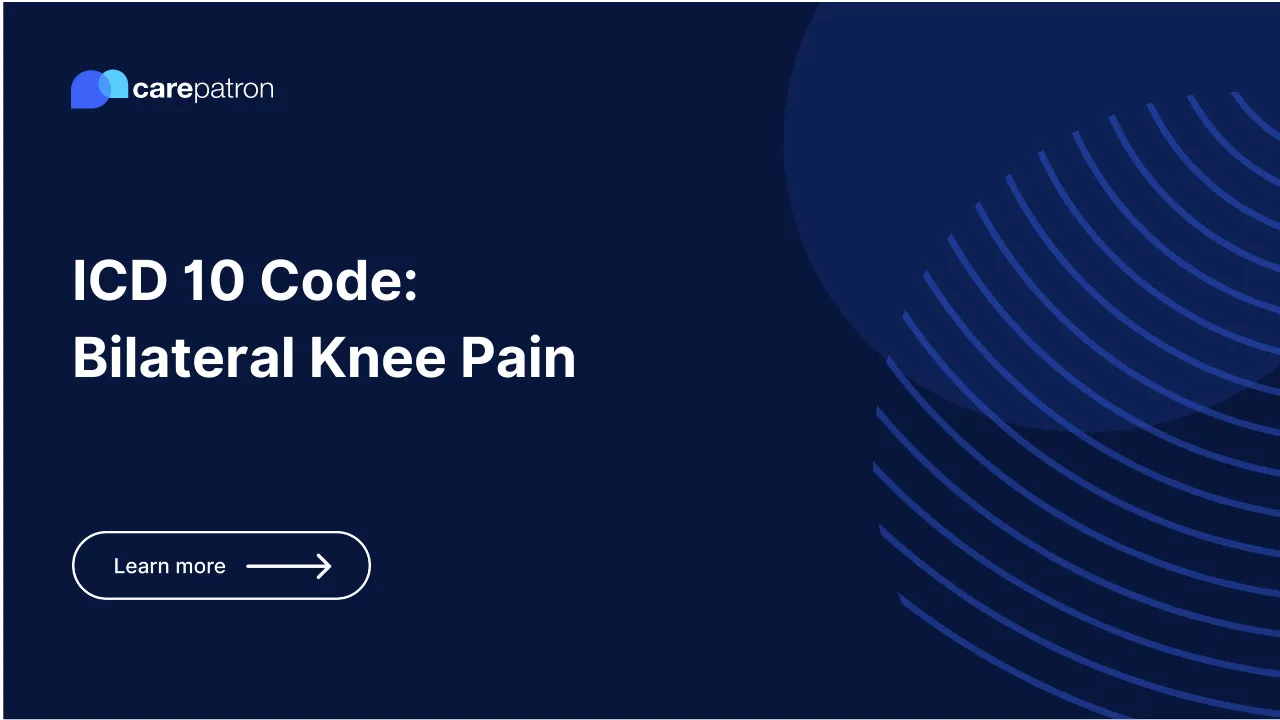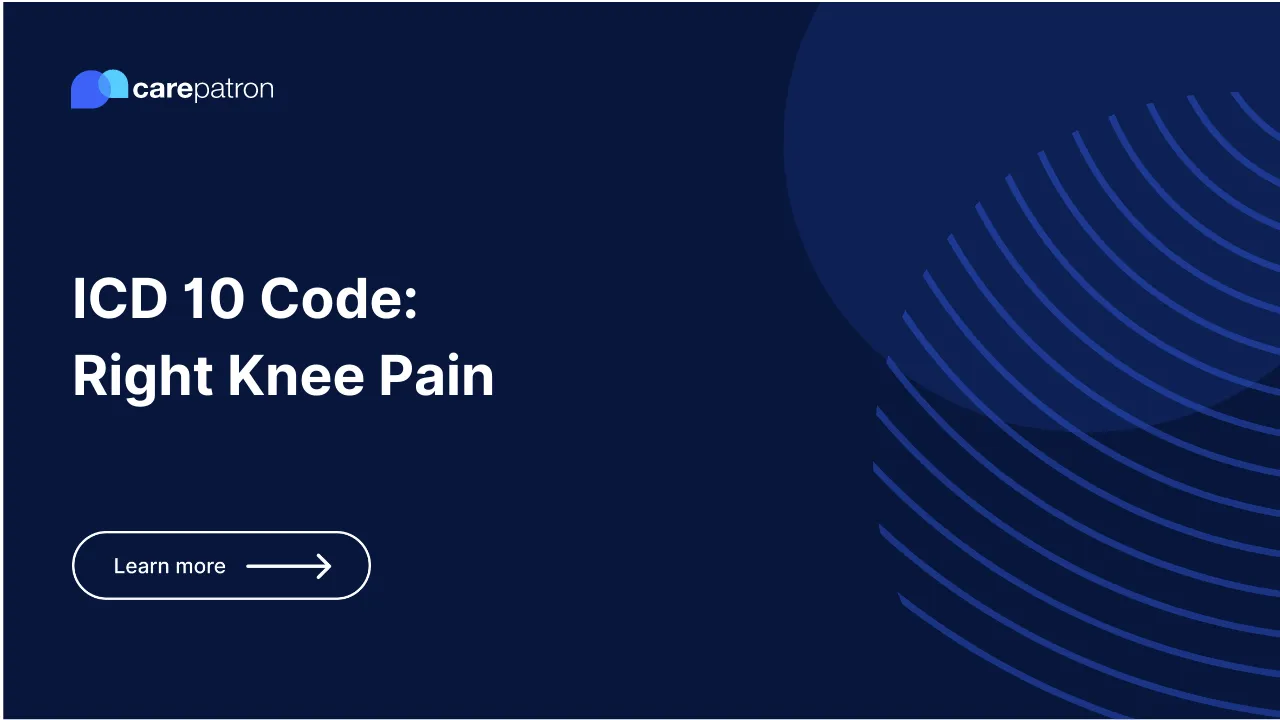Osteopenia ICD-10-CM Codes | 2023
Discover accurate ICD-10-CM codes for osteopenia diagnosis and documentation. Ensure precise coding for effective healthcare management.

What ICD-10 Codes are Used for Osteopenia?
Osteopenia refers to a condition characterized by low bone mineral density, which can increase the risk of developing osteoporosis and fractures. The International Classification of Diseases, Tenth Revision, Clinical Modification (ICD-10-CM) provides specific codes to document and classify osteopenia diagnoses. Here are some commonly used ICD-10 codes for osteopenia, along with their clinical descriptions:
M85.80: Age-related osteoporosis without current pathological fracture
This code is used when osteopenia is associated with age-related bone loss without any current fractures resulting from bone fragility.
M85.89: Other specified disorders of bone density and structure
This code is assigned when the osteopenia diagnosis does not fit into any other specific category mentioned in the ICD-10-CM.
Z-score of bone density and structure of the central (axial) skeleton
This code documents the Z-score of bone density and structure of the central or axial skeleton, indicating the deviation from the expected bone density based on age and sex.
M81.0: Age-related osteoporosis with current pathological fracture
This code is utilized when osteopenia is accompanied by a current pathological fracture, indicating severe bone fragility.
M85.9: Unspecified disorder of bone density and structure
This code is assigned when the specific diagnosis of osteopenia is not mentioned or needs to be clarified in the medical documentation.
M81.6: Localized osteoporosis [Lequesne]
This code is used when there is a localized region of decreased bone density, typically due to a specific condition or injury.
M85.80XA: Age-related osteoporosis without current pathological fracture, initial encounter
This code specifies the initial encounter with osteopenia without any current fractures resulting from bone fragility.
M85.80XD: Age-related osteoporosis without current pathological fracture, subsequent encounter
This code is assigned for subsequent encounters related to osteopenia without any current fractures resulting from bone fragility.
M85.80XS: Age-related osteoporosis without current pathological fracture, sequela
This code is used when there are sequelae or residual effects from osteopenia without any current fractures resulting from bone fragility.
M85.80XG: Age-related osteoporosis without current pathological fracture, delayed healing
This code is assigned when there is delayed healing related to osteopenia without any current fractures resulting from bone fragility.
It is important to consult the official ICD-10-CM coding guidelines and documentation to ensure accurate coding practices for osteopenia and related conditions. Proper coding facilitates effective healthcare management, research, and billing processes, promoting optimal patient care.
Which Osteopenia ICD codes are Billable:
M85.80 (Age-related osteoporosis without current pathological fracture)
Yes, this code represents age-related osteoporosis, a billable condition, even without a current fracture.
M85.89 (Other specified disorders of bone density and structure)
This code is not billable for osteopenia since it is an unspecified category and must provide sufficient detail for accurate billing.
Z-score of bone density and structure of the central (axial) skeleton
No, the Z-score itself is not a billable code. It is a measure used to assess bone density compared to the expected values for age and sex. Additional specific codes are needed to bill for osteopenia.
M81.0 (Age-related osteoporosis with current pathological fracture)
Yes, this code indicates age-related osteoporosis with a current pathological fracture, which is a billable condition due to the presence of the fracture.
M85.9 (Unspecified disorder of bone density and structure)
No, this code is not billable for osteopenia, as it represents an unspecified disorder and lacks the specificity for accurate billing.
M81.6 (Localized osteoporosis [Lequesne])
No, this code represents localized osteoporosis, which is not billable for osteopenia as it pertains to specific regions of decreased bone density rather than the overall condition.
M85.80XA (Age-related osteoporosis without current pathological fracture, initial encounter)
Yes, this code is billable as it indicates the initial encounter with age-related osteoporosis without a current fracture.
M85.80XD (Age-related osteoporosis without current pathological fracture, subsequent encounter)
Yes, this code is billable for subsequent encounters related to age-related osteoporosis without a current fracture.
M85.80XS (Age-related osteoporosis without current pathological fracture, sequela)
Yes, this code is billable when there are sequela or residual effects from age-related osteoporosis without a current fracture.
M85.80XG (Age-related osteoporosis without current pathological fracture, delayed healing)
Yes, this code is billable when delayed healing is related to age-related osteoporosis without a current fracture.
Clinical Information
- Importance of screening: Osteopenia is often asymptomatic, making screening vital to identify individuals at risk. Early detection allows for timely interventions to prevent further bone loss and the development of osteoporosis.
- Target population: Screening for osteopenia is typically recommended for postmenopausal women, individuals with risk factors (such as family history, low body weight, sedentary lifestyle, or certain medical conditions), and those taking medications that may affect bone health.
- Diagnostic tools: Screening for osteopenia involves bone mineral density (BMD) testing using dual-energy X-ray absorptiometry (DXA) scans. These scans provide T-scores and Z-scores to assess bone density and compare it to age-matched norms.
- ICD codes for screening: While there are no specific ICD codes solely for osteopenia screening, the appropriate codes indicate the reason for the test (e.g., Z13.820 for encounter for screening for postmenopausal osteoporosis).
- Frequency of screening: Osteopenia screening depends on individual risk factors and guidelines. Postmenopausal women without additional risk factors may undergo screening every 2 to 3 years, while higher-risk individuals may require more frequent screenings.
- Clinical management: If osteopenia is identified, clinical management strategies focus on lifestyle modifications, including exercise, calcium and vitamin D supplementation, smoking cessation, and fall prevention. In some cases, pharmacological interventions may be necessary.
- Follow-up and monitoring: Regular follow-up with bone density testing is crucial to assess the response to interventions and evaluate the progression of bone density over time. ICD codes related to osteopenia can be used to document subsequent encounters and monitoring.
Commonly asked questions
The frequency of screening depends on individual risk factors and guidelines. Postmenopausal women without additional risk factors may undergo screening every 2 to 3 years, while higher-risk individuals may require more frequent screenings.
If osteopenia is detected, clinical management strategies focus on lifestyle modifications, including exercise, calcium and vitamin D supplementation, smoking cessation, and fall prevention. In some cases, pharmacological interventions may be necessary.
Yes, regular follow-up with bone density testing is important to assess the response to interventions and monitor the progression of bone density over time. ICD codes related to osteopenia can be used to document subsequent encounters and monitoring.


.png)




.webp)
.webp)
.webp)
.webp)
.webp)
.webp)
.webp)
.webp)
.webp)
.webp)
.webp)
.webp)
.webp)
.webp)
.webp)
.webp)
.webp)
.webp)
%2520(1).webp)
.webp)
.webp)
.webp)
.webp)
.webp)
.webp)
.webp)
.webp)
.webp)
.webp)
.webp)
.webp)
.webp)
.webp)
.webp)
%2520(1).webp)
.webp)
.webp)
.webp)
.webp)
.webp)
.webp)
.webp)
.webp)
.webp)
.webp)
.webp)
.webp)
.webp)
.webp)
.webp)
.webp)
.webp)
.webp)
.webp)
.webp)
.webp)
.webp)
.webp)
.webp)
.webp)
.webp)
.webp)
.webp)
.webp)
.webp)
.webp)
.webp)
.webp)
.webp)

.webp)
.webp)
.webp)
.webp)
.webp)













.webp)
.webp)



.webp)


